The same XP-882 that had been shown in New York in 1970 served as the basis for this Wankel motor prototype. Under Bill Mitchell, Henry Haga was responsible for it’s design. Called the "Four-Rotor Car", it was arguably more stunning than the Two-Rotor XP-897GT, that appeared a bit later in 1973. Built on the first XP-882 chassis under the aegis of company design chief Bill Mitchell, it carried a pair of GM's experimental two-rotor engines bolted together into a 420 horsepower "super Wankel." A Corvette-like face and obvious high performance potential were taken as strong suggestions that GM was brewing a radical new Corvette for the late Seventies or early Eighties.
GM design chief Bill Mitchell kept its original lines intact, however -- not that there was reason to fiddle. Charles Jordan oversaw the design, which included radical bifold gullwing doors, and deformable plastic body-colored nose and tail sections which are common today, but revolutionary in the mid-1970's. The sterling silver paint, with silver leather interior and forged alloy turbine wheels later seen on the 1978 Corvette Indy Pace Car, gave the Corvette a space craft like appearance unmatched by any other advanced sports car. The interior was more fully engineered than the show-car norm, another indication this model was indeed a serious production prospect.
The car debuted at the Paris Auto Salon in 1973, during a period where American performance was being stifled by the twin evils of restrictive insurance practices and the first Arab oil embargo. At the time, performance enthusiasts didn’t have much to be enthusiastic about as engine compression ratios were coming down and quarter-mile times were going up.
Bill Mitchell, the ardent Corvette styling department magnate, gave the car a new life by removing the Wankel engine and reinstalling a small-block Chevrolet V8 and christening it the AeroVette. A stunningly dramatic looking car, it was promoted as the new 4th generation Corvette for 1980, but never saw series production...
The AeroVette is currently part of The GM Historical Collection.
|

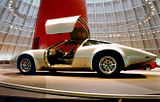

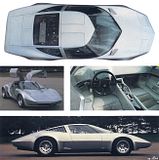
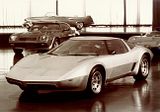

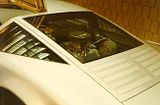
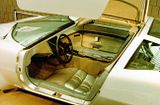

|
